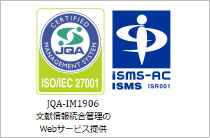ホームIMICライブラリMMWR抄訳2006年(Vol.55)HIV・エイズの25年間-米国、1981~2006・・・
2006/06/02Vol. 55 / No. 21
MMWR55(21): 585-589
Twenty-Five Years of HIV/AIDS - United States, 1981-2006
HIV・エイズの25年間-米国、1981~2006年
1981年6月5日、MMWRはカリフォルニア州ロサンゼルスに住む、以前は健康であった青年5名のニューモシスティス・カリニ肺炎の報告を発表した。これらの症例は、米国における後天性免疫不全症候群(エイズ)の最初に公表された症例であると確認されている。それ以来エイズという疾病は、国内外で公衆衛生上の最も大きな挑戦の一つとなった。ヒト免疫不全ウイルス(HIV)とエイズは、米国で50万人以上を含む全世界で2,200万人以上の命を奪ってきた。2006年、米国では100万人以上の人がHIV・エイズに感染しており、今年は4万人の新しい感染者が予想される。流行当初から、政府内外の数え切れないほどの人や組織が、この疾病を予防し、治療するために結集してきた。これらの努力は、HIV・エイズ感染者の参加と関与によって高められ、エイズ発生から25年の年に、この流行で死亡し、感染した人々を理解するには、HIV感染予防対策を広く加速させる以外に方法はない。CDCのHIV予防に対する包括的目標は、HIVのカウンセリング、検査、照会等の促進や、HIV感染者とウイルス感染の高リスクを有する者に対するHIV予防を奨励することにより、新しいHIV感染者数を削減し、人種や民族間の格差を是正することである。母子間周産期HIV感染での減少は、米国においてはHIV予防に対する公衆衛生上の成果である。周産期感染を通じてHIVに感染した幼児数は1990年代初期から中期の1,650から、2002年の144-236まで減少した。この減少は、さまざまな介入によるもので、例としては、妊婦の一般的なHIV検査、HIVに気付かない女性の出産時における迅速なHIV検査の使用、妊娠時にHIV感染した女性や誕生後の幼児による抗レトロウイルス療法の使用などが挙げられる。また、HIVに対する個人の知識を奨励し、国による血液供給の安全性確保のためにHIV感染に対する診断、監視検査の幅広い使用も成果と考えられる。国のHIV予防指導は、州保健衛生局、地方の保健所、社会を基盤とした組織等からなるHIV予防計画によって支持されている。新しい戦略は、公衆衛生上の効果を最大限にするために、地方の疫学や環境に合った従来の効果的介入を拡大すると同時に実施されることが必要である。
References
- CDC. Pneumocystis pneumonia-Los Angeles. MMWR 1981;30:250-2.
- Glynn MK, Rhodes P. Estimated HIV prevalence in the United States at the end of 2003 [Abstract T1-B1101]. Presented at the 2005 National HIV Prevention Conference, Atlanta, Georgia; June 14, 2005.
- CDC. Evolution of HIV prevention programs-United States, 1981- 2006. MMWR 2006;55:597-602.
- CDC. Reduction in perinatal transmission of human immunodeficiency virus-United States, 1985-2006. MMWR 2006;21:592-7.
- Dodd RY, Notari EP 4th, Stramer SL. Current prevalence and incidence of infectious disease markers and estimated window-period risk in the American Red Cross blood donor population. Transfusion 2002;42:975-9.
- Anderson JE, Chandra A, Mosher WD. HIV testing in the United States, 2002. Adv Data 2005;363:1-32.
- MacKellar DA, Valleroy LA, Anderson JE, et al. Recent HIV testing among young men who have sex with men: correlates, contexts, and HIV seroconversion. Sex Transm Dis 2006;33:183-92.
- Valdiserri RO. HIV/AIDS in historical profile. In: Valdiserri RO, ed. Dawning answers: how the HIV/AIDS epidemic has helped to strengthen public health. Oxford, England: Oxford University Press; 2003:3-32.
- CDC. HIV/AIDS surveillance report, 2004. Vol. 16. Atlanta, GA: US Department of Health and Human Services, CDC; 2005. Available at: <http://www.cdc.gov/hiv/stats/hasrlink.htm>.
- CDC. HIV/AIDS among men who have sex with men fact sheet. Available at <http://www.cdc.gov/hiv/pubs/facts/msm.htm>.
- CDC. HIV/AIDS surveillance report 2003. Vol. 15. Atlanta, GA: US Department of Health and Human Services, CDC; 2004:1-46.
- CDC. HIV prevalence, unrecognized infection, and HIV testing among men who have sex with men-five US cities, June 2004-April 2005. MMWR 2005;54:597-601.
- Dean HD, Steele CB, Satcher AJ, Nakashima AK. HIV/AIDS among minority races and ethnicities in the United States, 1999-2003. J Natl Med Assoc 2005;97(7 Suppl):S5-12.
- CDC. Epidemiology of HIV/AIDS-United States, 1981-2005. MMWR 2006;55:589-92.
- Adapting CDC DEBI list for target audiences is a major issue among CBOs. Translation changes can affect funding. AIDS Alert 2005;20:73, 75-8.
- Amaro H, Blake SM, Morrill AC, et al. HIV prevention community planning: challenges and opportunities for data-informed decisionmaking. AIDS Behav 2005;9(2 Suppl):S9-27.
- Kates J, Sorian R, Crowley JS, Summers TA. Critical policy challenges in the third decade of the HIV/AIDS epidemic. Am J Public Health 2002;92:1060-3.
- Aragon R, Kates J, Hoff T. The AIDS epidemic at 20 years: the view from America. Menlo Park, CA: Kaiser Family Foundation; 2001.
- Valdiserri RO. HIV/AIDS stigma: an impediment to public health. Am J Public Health 2002;92:371-7.
- Presidential Advisory Council on HIV/AIDS. Achieving an HIV-free generation: recommendations for a new American HIV strategy. Washington, DC: US Department of Health and Human Services; 2006.
- Marks G, Crepaz N, Senterfitt JW, Janssen RS. Meta-analysis of highrisk sexual behavior in persons aware and unaware they are infected with HIV in the United States: implications for HIV prevention programs. J Acquir Immune Defic Syndr 2005;39:446-53.
- Greenwald JL, Rich CA, Bessega S, Posner MA, Maeda JL, Skolnik PR. Evaluation of the Centers for Disease Control and Prevention’s recommendations regarding routine testing for human immunodeficiencyvirus by an inpatient service: who are we missing? Mayo Clin Proc 2006;81:452-8.
- Chou R, Huffman LH, Fu R, Smits AK, Korthuis PT; US Preventive Services Task Force. Screening for HIV: a review of the evidence for the U.S. Preventive Services Task Force. Ann Intern Med 2005;143:55-73.
- CDC. Use of social networks to identify persons with undiagnosed HIV infection-seven U.S. cities, October 2003-September 2004. MMWR 2005;54:601-5.
- Gunn RA, Lee MA, Callahan DB, Gonzales P, Murray PJ, Margolis HS. Integrating hepatitis, STD, and HIV services into a drug rehabilitation program. Am J Prev Med 2005;29:27-33.
- Gunn RA, Murray PJ, Ackers ML, Hardison WG, Margolis HS. Screening for chronic hepatitis B and C virus infections in an urban sexually transmitted disease clinic: rationale for integrating services. Sex Transm Dis 2001;28:166-70.
- Wilson BC, Moyer L, Schmid G, et al. Hepatitis B vaccination in sexually transmitted disease (STD) clinics: a survey of STD programs. Sex Transm Dis 2001;28:148-52.
Copyright © 2013 International Medical Information Center. All Rights Reserved.












